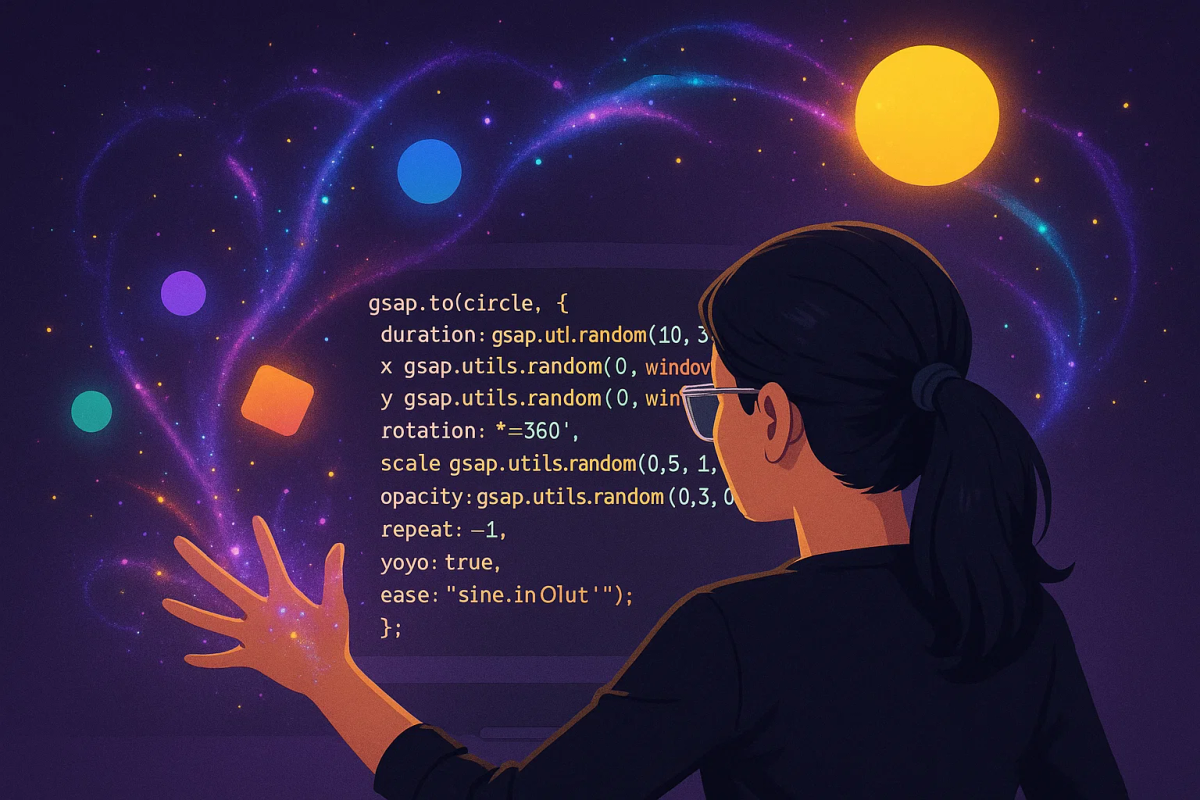
GSAP library is too useful to be free!
GSAP is one of those rare tools that makes you wonder why you ever bothered with CSS-only animations. It’s fast, smooth, and ridiculously powerful. Honestly? It shouldn’t be free.
You don’t just add motion—you add intention, rhythm, and life to your UI. Let’s break down a few tips that’ll help you push GSAP past the basics.
Reflect on Intent Lvl 1#
The temptation is to go flashy right away but GSAP shines most when you use it with restraint. The little things build the biggest sense of polish.
Microinteractions#
Start with the details: button hovers, menu reveals, or icon spins. GSAP gives you better control than CSS transitions, letting you use easing curves that feel natural.
A button that uses back.out(1.7) on hover feels responsive but playful. An icon that gently rotates with elastic.out(1, 0.5) adds delight without distraction.
Control Perception with Easing#
Easing is your storytelling tool. Want urgency? Use power4.in. Want comfort? Use power2.out.
A simple fade can feel rushed or elegant depending on how you ease it. By tweaking timing, you shape how users emotionally register what’s happening. This is what separates “it moves” from “it feels right.”
Master the Timeline#
If you’re only using gsap.to and gsap.from, you’re scratching the surface. Timelines turn separate animations into choreography.
Sequence with Precision#
Use gsap.timeline() to line up events with exact timing. Stagger elements in or overlap them for fluid transitions.
For example:
- Fade in the hero background.
- Start sliding up content before the fade finishes.
- Bounce the CTA button last, making it the natural focus.
You get motion that feels intentional, like a director calling cues.
Reuse with Labels#
Labels let you define named points in a timeline. Instead of hardcoding delays, you can tell animations to start “at label X.”
This makes editing painless. If you need to shift everything forward, change the label once instead of rewriting every offset. It’s like version control for your motion.
Reuse and Scale with Variables#
Animations can get messy fast if every value is hand-tuned. Keep things consistent by defining reusable motion rules.
Define Motion Tokens#
Create a config object with durations, delays, and easings. Example:
const motion = {
fast: 0.3,
base: 0.6,
slow: 1.2,
ease: 'power2.out'
}Now every animation pulls from a shared language. Want your app to feel snappier? Update motion.base and everything updates in sync.
Add Controlled Variations#
GSAP’s utilities (gsap.utils.random(), gsap.utils.wrap()) let you inject subtle randomness. A stagger that shifts by 0.1–0.3 seconds looks organic instead of robotic.
Think confetti, particle effects, or list items entering with slight differences. Controlled variation gives your UI life without losing consistency.